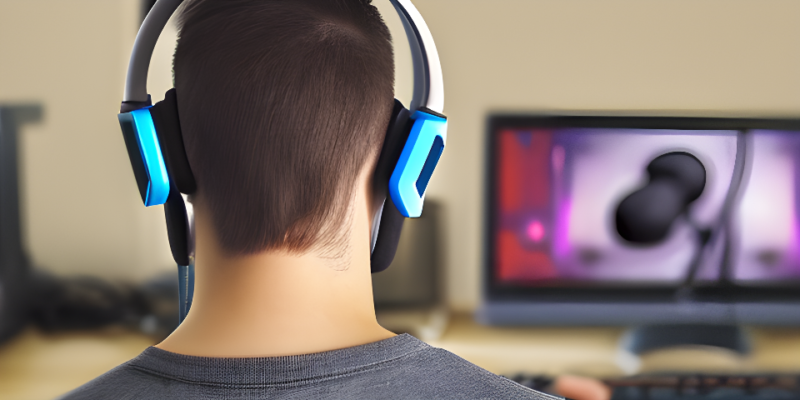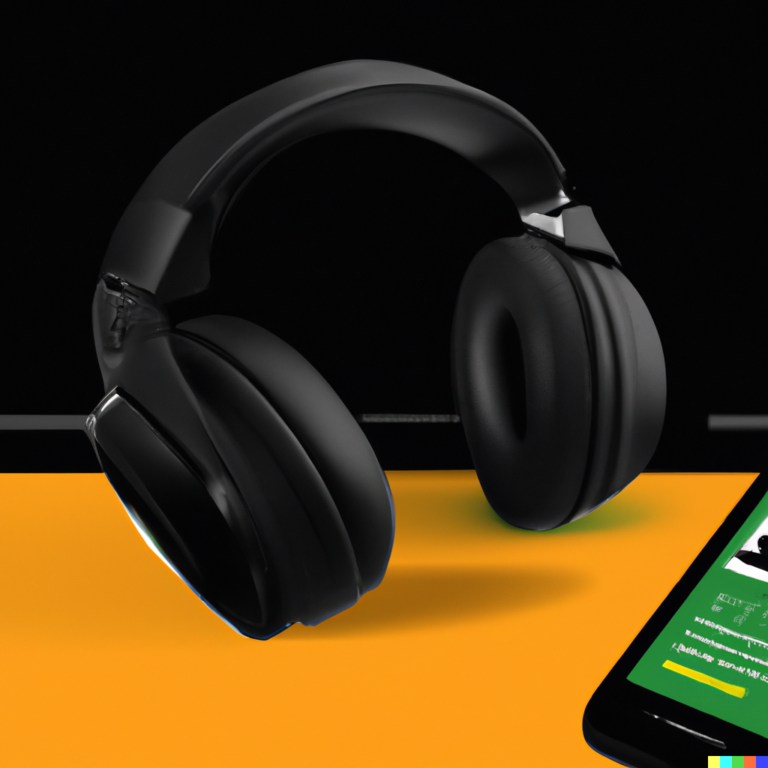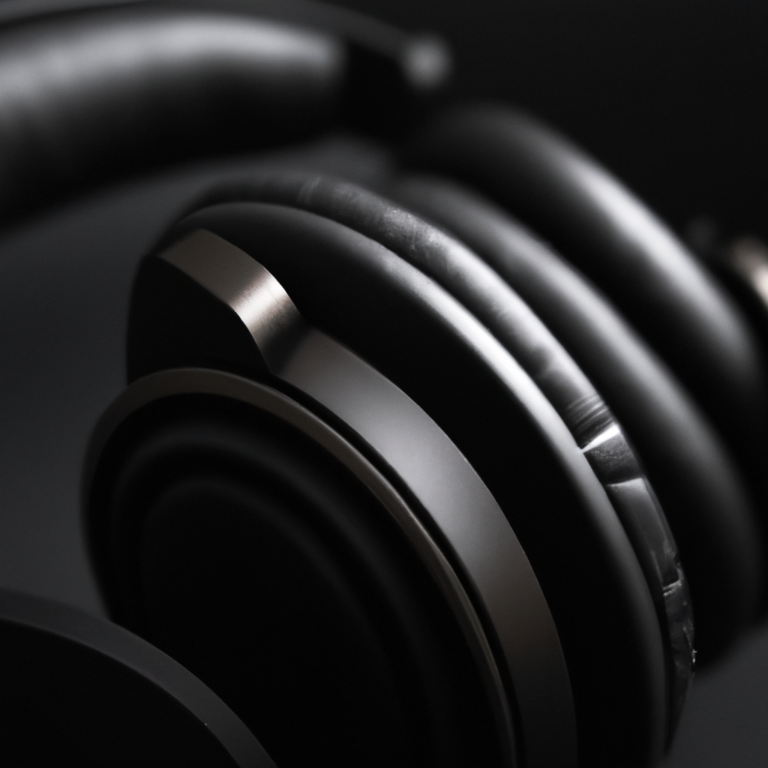Choose the Right Headset for Online Streaming
Headsets are an important part of any online streaming setup. The right headset can make or break your performance and listening experience. But with so many options available, knowing which one is best for you can be difficult.
In this article, we’ll explore the different types of headsets available for streaming, including wired and wireless options, over-ear and in-ear styles, and noise-canceling features to help you choose the right headset for online streaming.

How to Choose the Right Headset for Online Streaming
I understand that choosing the right headset is a pivotal decision that can significantly impact your streaming quality and overall experience. As you embark on this journey, it’s essential to consider various factors such as sound quality, comfort, microphone clarity, and additional features like noise cancellation.
Each aspect plays a crucial role in ensuring that your streaming sessions are not only enjoyable for you but also engaging and clear for your audience. In this section, we’ll delve into the key considerations to help you make an informed choice, drawing from my personal insights and industry knowledge to guide you toward the headset that best suits your unique streaming needs.
Wired vs Wireless Headsets
The most basic choice you’ll have to make when selecting a headset is whether you want a wired or wireless model. Wired headsets are connected to your computer or device via a cable, while wireless models use Bluetooth technology to connect wirelessly.
Both types have their advantages and disadvantages; wired headsets generally offer better sound quality but can be more cumbersome and less versatile than their wireless counterparts.
Wireless models are more convenient, but may have limited battery life and decreased audio quality compared to wired options.
| Wired Headset | Wireless Headset | |
|---|---|---|
| Pros | 1. Consistent audio quality | 1. Freedom of movement |
| 2. No battery life concerns | 2. Convenience and flexibility | |
| 3. Lower latency | 3. No tangled cables | |
| 4. Generally more affordable | ||
| Cons | 1. Limited mobility | 1. Potential for wireless interference |
| 2. Tangled cables can be inconvenient | 2. Reliance on battery life | |
| 3. Limited range | 3. Higher cost compared to wired | |
| 4. Requires physical connection |
Over-Ear vs In-Ear Headsets
Another decision you’ll need to make is whether you prefer an over-ear or in-ear style of headset. Over-ear headphones typically provide better sound quality as they fit snugly around your ears, blocking out external noise and providing a superior bass response.
On the other hand, in-ear headsets can be more comfortable for those who don’t like the feel of something covering their entire ear. They also tend to be lighter and less bulky than over-ear models.
| Feature | Over-Ear Headsets | In-Ear Headsets |
|---|---|---|
| Comfort | – Generally more comfortable for long sessions | – Can be uncomfortable for long use |
| – Larger ear cups cushion around the ears | – Directly fit into the ear canal | |
| Sound Quality | – Typically better sound quality | – Good sound quality, but often less than over-ear |
| – Larger drivers provide richer sound | – Smaller drivers | |
| Noise Isolation | – Good passive noise isolation | – Excellent noise isolation |
| – Some models have active noise cancellation | – Inherent noise isolation due to in-ear design | |
| Portability | – Bulky and less portable | – Highly portable and compact |
| Heat and Sweat | – Can cause ears to get warm over time | – Less heat around the ears |
| Durability | – Generally more durable | – More prone to wear and tear due to size |
| Microphone Quality | – Often better microphone quality | – Microphone quality varies |
| Price | – Can be more expensive | – Generally less expensive |
| Ease of Use | – Easy to put on and take off | – Can be tricky to fit properly |
| Versatility | – Better for a home streaming setup | – Great for streaming on the go |
Headset with Built-in Mic vs External Mic
Finally, you’ll need to decide whether you want a headset with an integrated microphone or an external mic. Headsets with an integrated mic are typically more convenient and easier to use since there’s no need for extra wires or cables; however, they may not provide the same level of sound quality as a dedicated mic.
External mics can offer superior audio quality but require additional setup and maintenance. Ultimately, the decision between these two options will come down to your budget, space available in your streaming setup, and personal preference.
| Feature | Headset with Built-in Microphone | Headset with External Microphone |
|---|---|---|
| Sound Quality | – Good for casual use | – Superior sound quality for professional use |
| – May have lower quality than external mics | – High-quality mics offer clearer, richer sound | |
| Convenience | – More convenient with all-in-one design | – Less convenient, requires setup and adjustment |
| – Easier to manage with fewer cables | – More cables and equipment to manage | |
| Portability | – Highly portable for mobile use | – Less portable due to additional equipment |
| Microphone Quality | – Generally adequate for casual streaming | – Excellent for professional-grade streaming |
| – May pick up more background noise | – Better at noise cancellation/isolation | |
| Flexibility | – Limited adjustability of mic position | – High adjustability for optimal positioning |
| Price | – Generally less expensive | – Can be more expensive (especially high-end mics) |
| Ease of Use | – Plug-and-play with minimal setup | – Requires more setup and technical knowledge |
| Customization | – Limited customization options | – Greater flexibility and customization |
| Durability | – If the mic breaks, the whole headset may be affected | – Individual components can be replaced |
| Visual Appeal | – Less obtrusive in visual presentations | – External mic can be more visually prominent |
| Compatibility | – Compatible with most devices without extra gear | – May require additional interfaces or gear |
Noise-Canceling Features
If you’re looking for a headset that offers superior sound quality in noisy environments such as gaming tournaments or live streams, noise-canceling features might be worth considering.
Noise-canceling technology uses microphones to detect ambient sounds around you and then creates an “anti-noise” frequency that cancels out those sounds—leaving only your voice coming through clearly in the mix.
This allows streamers to hear themselves much better during broadcasts without having to turn up the volume excessively in order to drown out background noise.
| Feature | Headset with ANC | Headset without ANC |
|---|---|---|
| Noise Cancellation | – Superior noise cancellation | – Basic or no noise cancellation |
| – Reduces background noise significantly | – Relies on passive noise isolation | |
| Sound Quality | – Can offer high-quality audio | – Often good sound quality |
| – ANC might slightly alter audio fidelity | – Pure audio without ANC interference | |
| Battery Life | – Requires battery power for ANC | – No battery needed or longer battery life |
| – Frequent charging may be necessary | – Ideal for extended use without charging | |
| Comfort | – Can be bulkier due to ANC components | – Potentially lighter and more comfortable |
| Price | – Generally more expensive | – More budget-friendly |
| Focus and Concentration | – Better for focus in noisy environments | – Less effective in noisy environments |
| Versatility | – Useful in a variety of noisy settings | – Best in controlled, quieter environments |
| Ease of Use | – May require management of ANC settings | – Simple use without additional settings |
| Durability | – Additional electronic components may affect lifespan | – Potentially more durable with fewer electronics |
| Portability | – Slightly less portable due to added weight | – More portable and lightweight |
Conclusion
In conclusion, selecting the right headset is a critical step in enhancing your online streaming experience. It’s a balance of comfort, sound quality, and functionality that aligns with your personal and streaming requirements. As you make this choice, remember that the headset is an extension of your streaming setup, contributing significantly to the quality of your content and the comfort of your sessions.
Now, when it comes to choosing a platform for streaming, based on my experience, the top three contenders are Twitch, YouTube Live, and Facebook Gaming.
Twitch stands out for its dedicated streaming community and interactive features, YouTube Live for its vast audience and integration with the world’s largest video platform, and Facebook Gaming for its ease of reaching a diverse audience through social media connectivity. Each platform has its unique strengths, so consider your target audience and content style when making your choice.
With these tips in mind, you should now have all the information needed to pick out the perfect set of headphones for your streaming needs!
Our Mission: At AudioInspects, we are dedicated to providing the most comprehensive and authentic reviews of audio equipment on the market. We conduct independent testing and research of products, so you can make an informed decision before making a purchase. Our mission is to help you find the best audio equipment to improve your listening experience. So trust us to deliver the most reliable recommendations and advice.
Disclosure: When you do decide to make a purchase through our links, please note that we may earn a commission, but this does not affect the honesty of our reviews. You can read our affiliate disclosure in our Disclosure.






